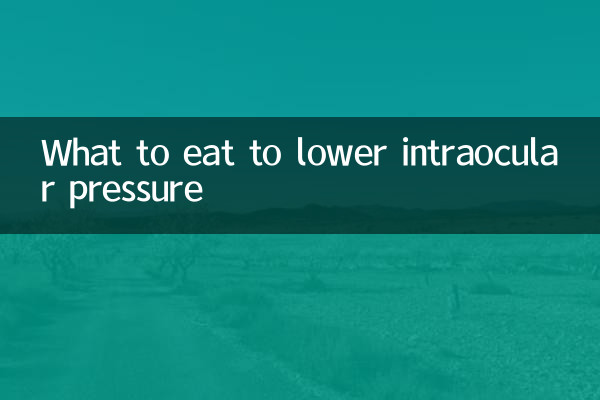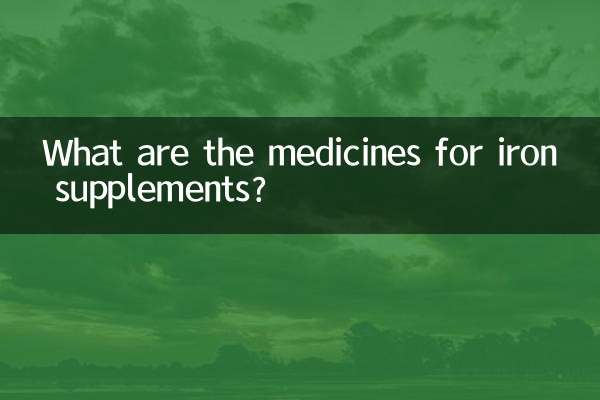What to eat to lower intraocular pressure
In recent years, with the popularization of electronic devices, the problem of high intraocular pressure caused by excessive eye use has become increasingly prominent. High intraocular pressure not only causes eye discomfort but may also increase the risk of glaucoma. Through reasonable dietary adjustments, you can effectively help reduce intraocular pressure. This article will combine the hot topics and hot content on the Internet in the past 10 days, recommend some foods that can help lower intraocular pressure, and provide structured data for reference.
1. The dangers of high intraocular pressure and the importance of dietary conditioning

High intraocular pressure means that the pressure inside the eyeball exceeds the normal range (usually 10-21 mmHg). Long-term high intraocular pressure may cause damage to the optic nerve and even cause glaucoma. In addition to drug treatment and regular examinations, dietary conditioning is also an important means to assist in lowering intraocular pressure. Research shows that certain foods rich in antioxidants, vitamins and minerals can improve blood circulation in the eyes and reduce intraocular pressure.
2. Recommended foods for lowering intraocular pressure
The following is a list of foods that reduce intraocular pressure that have been hotly discussed on the Internet in the past 10 days, compiled based on nutritional research and user feedback:
| food name | Main nutrients | Principle of lowering intraocular pressure |
|---|---|---|
| blueberry | Anthocyanins, Vitamin C | Antioxidant, improve eye microcirculation |
| spinach | Lutein, magnesium | Protect optic nerve and regulate intraocular pressure |
| salmon | Omega-3 fatty acids | Reduce eye inflammation and lower intraocular pressure |
| dark chocolate | flavonoids | Promote blood circulation and relieve intraocular pressure |
| Nuts (such as walnuts) | Vitamin E, zinc | Antioxidant, protect retina |
| green tea | Catechin | Reduce free radical damage and improve intraocular pressure |
3. Precautions for diet to lower intraocular pressure
1.Consume caffeine in moderation:Excessive caffeine may temporarily increase intraocular pressure. It is recommended that daily caffeine intake does not exceed 200mg (about 1-2 cups of coffee).
2.Control salt intake:A high-salt diet may cause fluid retention and indirectly increase intraocular pressure. It is recommended that the daily salt intake be less than 5g.
3.A balanced diet:A single food cannot completely solve the problem of high intraocular pressure. A variety of nutritious foods must be combined with healthy living habits.
4. Inventory of popular intraocular pressure lowering topics in the past 10 days
According to data from social media and health platforms, the following topics have received much attention recently:
| hot topics | Discussion popularity | core ideas |
|---|---|---|
| “Can blueberries really lower intraocular pressure?” | high | Most users report that blueberries are effective in relieving eye fatigue, but they need to be consumed for a long time. |
| "Omega-3 Fatty Acids and Glaucoma Prevention" | in | Experts recommend eating deep-sea fish 2-3 times a week |
| “Effects of Green Tea vs Coffee on Intraocular Pressure” | high | Green tea is better for eye health, coffee should be consumed in moderation |
5. Summary
Through reasonable dietary choices, you can effectively help reduce intraocular pressure. Foods such as blueberries, spinach, and salmon have become popular choices for lowering intraocular pressure due to their unique nutrients. At the same time, attention should be paid to controlling the intake of caffeine and salt, and combined with healthy living habits. If you are at risk for high intraocular pressure or glaucoma, it is recommended to undergo comprehensive conditioning under the guidance of a doctor.
I hope this article can provide you with valuable reference and wish you good eye health!

check the details

check the details